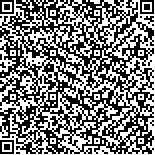本文已被:浏览 928次 下载 595次
Received:May 15, 2020 Published Online:October 20, 2020
Received:May 15, 2020 Published Online:October 20, 2020
中文摘要: 目的 探讨二维斑点追踪分层应变技术定量评价高血压早期亚临床心肌损害的应用价值。
方法 纳入2017年1月至2019年12月心血管内科确诊的原发性高血压患者80例为高血压组,健康成人30例为对照组,行经胸超声心动图检查,获取常规超声心动图参数[收缩末期左房内径(LAd)、左室舒张末期内径(LVEDd)、室间隔厚度(IVSd)、左室后壁舒张末期厚度(LVPWd),左室心肌质量指数(LVMI)和左室射血分数(LVEF),舒张早期二尖瓣口血流速度(E)和舒张晚期二尖瓣口血流速度(A)、二尖瓣环舒张早期间隔侧心肌运动速度(Sep e)和侧壁心肌运动速度(Lat e)],然后将图像导入Echo PAC工作站,行左室分层应变分析,获取分层应变参数[心内膜层、心中膜层和心外膜层纵向总应变(GLSendo、GLSmid、GLSepi),心内膜层、心中膜层和心外膜层环向应变(CSendo、CSmid CSepi)]。对比分析两组间常规参数以及分层应变参数的差异。
结果 高血压组患者常规参数LAd、IVSd、LVPWd、E、A、E/A、Sep e、Lat e与对照组比较差异有统计学意义(P均<0.01),而两组间LVEF及LVEDd相当(P>0.05)。高血压组应变参数GLSendo、GLSmid、GLSepi和CSmid、CSepi绝对值均低于对照组(P<0.01,P<0.05),而两组间CSendo差异无统计学意义(P>0.05),即心肌心内膜层的GLS比CS更敏感;心肌应变能力GLS和CS绝对值自内向外呈递减趋势:心内膜>心中膜>心外膜(P均<0.05)。
结论 GLS比CS能更敏感地反映高血压亚临床心肌损害,左室功能的恶化从心内膜梯度变化至心外膜。应用二维斑点追踪分层应变技术可以定量评估高血压早期亚临床心肌损害。
Abstract:Objective To explore the quantitative evaluation of layer-specific strain by two-dimensional speckle tracking echocardiography(2DSTE) for subclinical myocardial damage in early hypertension.
Methods A total of eighty patients with essential hypertension and 30 healthy people from January 2017 to December 2019 were respectively enrolled as hypertension group and control group.Transthoracic echocardiography was performed to obtain the parameters of conventional echocardiography,including end-systolic left atrial diameter (LAd),left ventricular end-diastolic diameter (LVEDd),interventricular septal depth(IVSd) and left ventricular posterior wall end-diastolic thickness (LVPWd),left ventricular mass index (LVMI),left ventricular ejection fraction (LVEF),
early diastolic mitral valve orifice blood flow velocity (E)and late diastolic mitral valve orifice blood flow velocity (A),
septum peak early myocardial diastolic velocities(Sep e)and lateral peak early myocardial diastolic velocities(Lat e).After the images were imported into the Echo PAC workstation,layer-specific strain analysis was performed to obtain layer-specific strain parameters[(GLSendo,GLSmid,GLSepi),(CSendo,CSmid,CSepi)] and compare the differences in conventional parameters and layer-specific strain parameters between two groups.
Results There were significant difference in the routine parameters of LAd,IVSd,LVPWd,E,A,E/A,Sep e and Lat e between two groups(all P<0.01),but there were no significant differences in LVEF and LVEDd between two groups (P>0.05).The absolute values of GLSendo,GLSmid,GLSepi,CSmid and CSepi in hypertension group were significantly lower than those in control group (P<0.01,P<0.05),while there was no significant difference in CSendo between two groups (P>0.05).The absolute values of GLS and CS of myocardial strain showed a decreasing trend from the inside to the outside(endocardial>midcardial>epicardial) (all P<0.05).
ConclusionsGLS appears to be more sensitive for detecting subclinical myocardial damage compared with CS in hypertension,with a gradient deterioration of left ventricular function from endocardial to epicardium.Layer-specific strain by 2DSTE can be used to evaluate quantitatively the early subclinical myocardial damage in hypertension patients.
keywords: Echocardiography Two-dimensional speckle tracking Layer-specifific strain Hypertension Subclinical Myocardial damage
文章编号: 中图分类号: 文献标志码:A
基金项目:国家中医药临床研究基地科研专项(JDZX2015102);江苏省科技重点研发专项(BE2017775);江苏省中医院面上项目(Y18012)
引用文本:
